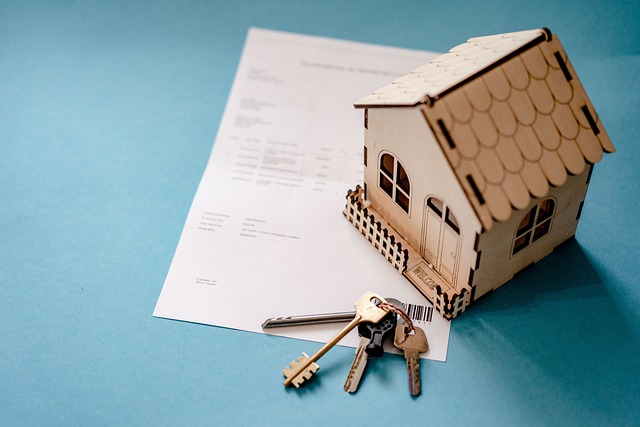Bank-Owned Properties for Sale in Canada: A Complete Guide
Bank-owned properties represent a unique segment of the Canadian real estate market, offering potential opportunities for buyers seeking alternatives to traditional home purchases. These properties, also known as foreclosed or repossessed homes, become available when borrowers default on their mortgage obligations and lenders take ownership. Understanding how these properties work, their advantages, and the purchasing process can help buyers make informed decisions in this specialized market.

When financial institutions in Canada repossess properties due to mortgage defaults, these homes enter the market as bank-owned real estate. This segment of the housing market operates differently from conventional sales, with distinct processes, timelines, and considerations. Buyers interested in this market need to understand both the potential benefits and the challenges that come with purchasing foreclosed properties.
What are bank-repossessed properties?
Bank-repossessed properties are homes that financial institutions have taken ownership of after the original borrower failed to meet their mortgage payment obligations. In Canada, the foreclosure process varies by province, with some regions using judicial foreclosure systems while others employ power of sale provisions. When a homeowner defaults on their mortgage, the lender initiates legal proceedings to recover the outstanding debt. Once the lender gains ownership, the property becomes a bank-owned asset that the institution seeks to sell, often to minimize losses and recover the outstanding loan amount. These properties can range from single-family homes and condominiums to multi-unit buildings and vacant land. The condition of bank-owned properties varies significantly, as some homeowners maintain their properties until the final transfer, while others may neglect maintenance during financial hardship.
Advantages of buying bank-owned properties
Purchasing bank-owned properties can offer several potential benefits for informed buyers. Financial institutions are typically motivated sellers who want to remove these non-performing assets from their books quickly, which can sometimes result in competitive pricing. Banks are not in the business of property management, so they often price these homes to sell efficiently. Buyers may encounter less emotional negotiation compared to traditional sales, as banks approach transactions from a purely financial perspective. Additionally, bank-owned properties are sold free of the previous owner, meaning buyers do not inherit existing occupants or need to navigate tenant relationships. The title is typically clear of liens related to the previous mortgage, though buyers should always conduct thorough title searches. For investors and first-time buyers with renovation skills, these properties can represent opportunities to acquire real estate in desirable neighborhoods that might otherwise be financially out of reach.
How to find bank-owned properties for sale?
Locating bank-owned properties in Canada requires a multi-faceted approach. Major financial institutions occasionally list foreclosed properties on their websites, with banks like TD, RBC, and Scotiabank maintaining dedicated sections for real estate owned properties. Working with real estate agents who specialize in foreclosures and bank-owned properties can provide access to listings before they reach the general market. Multiple Listing Service platforms include filters for bank-owned or foreclosure properties, allowing buyers to search specifically for these opportunities. Online real estate portals and auction websites also feature bank-owned properties, with some institutions choosing to sell through public auctions rather than traditional listings. Provincial court systems publish foreclosure notices, which can alert buyers to upcoming opportunities. Networking with local real estate investment groups and attending property auctions can provide additional leads. Buyers should monitor multiple sources regularly, as bank-owned properties can sell quickly when priced competitively.
Important considerations when purchasing
Buying bank-owned properties requires careful due diligence and realistic expectations. These properties are typically sold on an as-is basis, meaning banks will not make repairs or improvements before sale. Buyers should budget for comprehensive home inspections, as deferred maintenance and damage are common in foreclosed properties. Financing can present challenges, as some lenders are hesitant to provide mortgages for properties in poor condition, potentially requiring buyers to secure renovation financing or purchase with cash. Legal considerations include ensuring clear title, understanding any outstanding property taxes or condo fees, and reviewing all disclosure documents provided by the selling institution. Buyers should factor in renovation costs, holding costs, and the time required to make the property livable or rentable. The purchase process may take longer than traditional sales due to bank approval procedures and additional documentation requirements. Working with experienced real estate lawyers familiar with bank-owned transactions is essential to navigate the legal complexities. Buyers should also research the neighborhood and comparable property values to ensure the purchase price, combined with necessary repairs, still represents good value in the current market.
The purchase process and timeline
The process of purchasing bank-owned properties differs from conventional real estate transactions. After identifying a property, buyers typically submit offers through real estate agents or directly to the bank’s asset management department. Banks often require pre-approval letters or proof of funds before considering offers. The review and approval process can take several weeks, as offers may need to pass through multiple levels of institutional approval. Once an offer is accepted, buyers proceed with inspections, though banks rarely agree to make repairs based on inspection findings. The closing process involves standard legal procedures, including title searches, title insurance, and final walkthroughs. Buyers should expect longer timelines overall, with the entire process potentially taking two to four months from offer to closing. Patience and flexibility are essential, as banks operate on institutional timelines that may not align with typical residential real estate schedules.
Risks and challenges to understand
While bank-owned properties can offer opportunities, buyers must understand the associated risks. Properties may have hidden damage, code violations, or environmental issues not immediately apparent during viewings. Former owners occasionally remove fixtures, appliances, or even essential systems like furnaces before vacating. Neighborhood decline can occur in areas with high foreclosure rates, potentially affecting future property values. Financing challenges may arise if the property does not meet lender standards for condition and safety. Renovation costs can exceed initial estimates, particularly if structural or system issues are discovered. The competitive nature of the market means desirable properties may receive multiple offers, reducing negotiation leverage. Buyers should approach bank-owned properties with realistic budgets, contingency funds, and professional guidance to navigate these challenges successfully.
Bank-owned properties represent a distinct segment of the Canadian real estate market with unique opportunities and challenges. Success in this market requires thorough research, realistic expectations, professional guidance, and careful financial planning. Buyers who approach these transactions with due diligence and patience may find valuable opportunities, while those who rush or underestimate the complexities may encounter significant difficulties. Understanding the foreclosure process, conducting comprehensive inspections, securing appropriate financing, and working with experienced professionals are all essential steps for anyone considering purchasing bank-owned properties in Canada.




